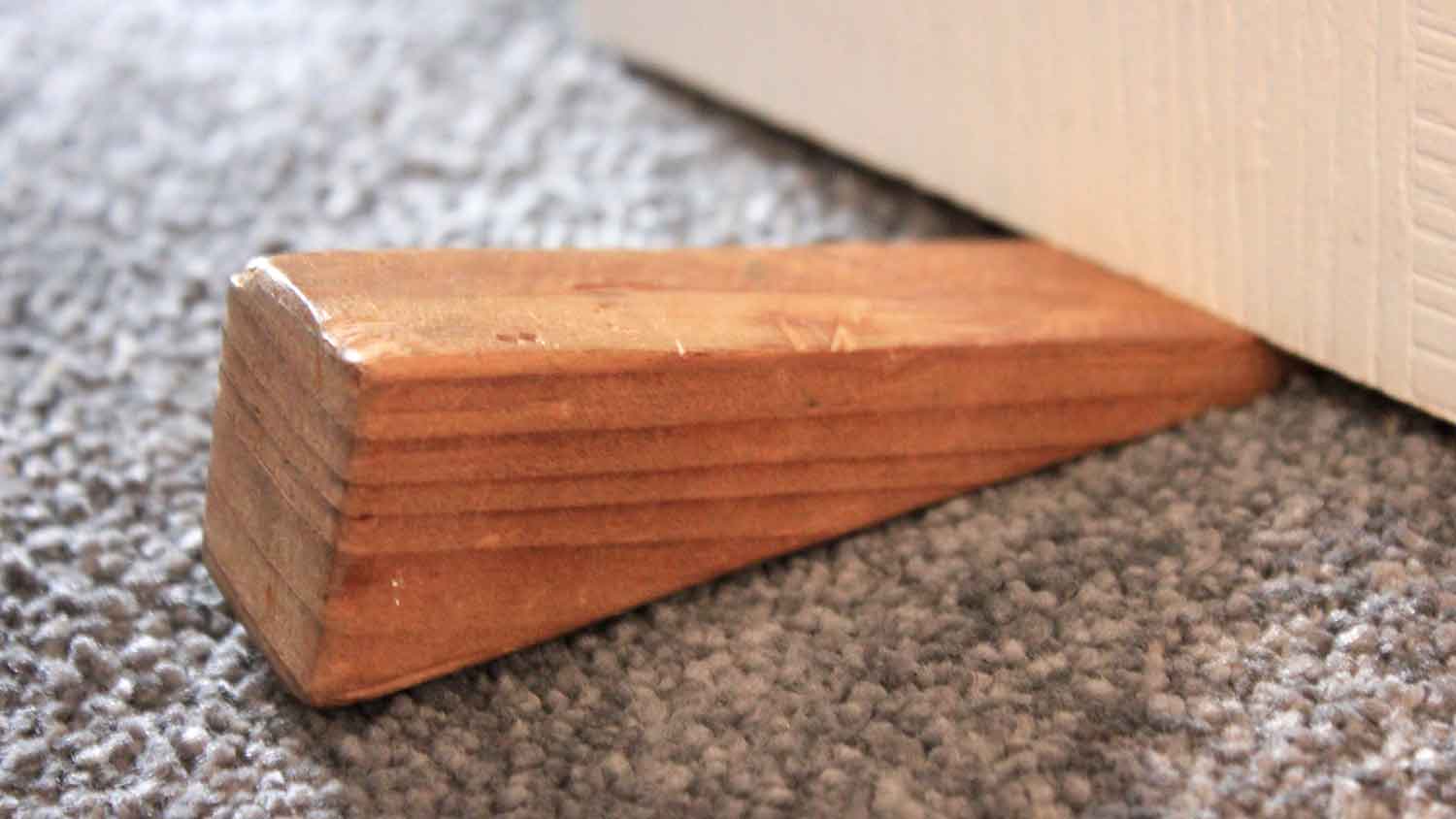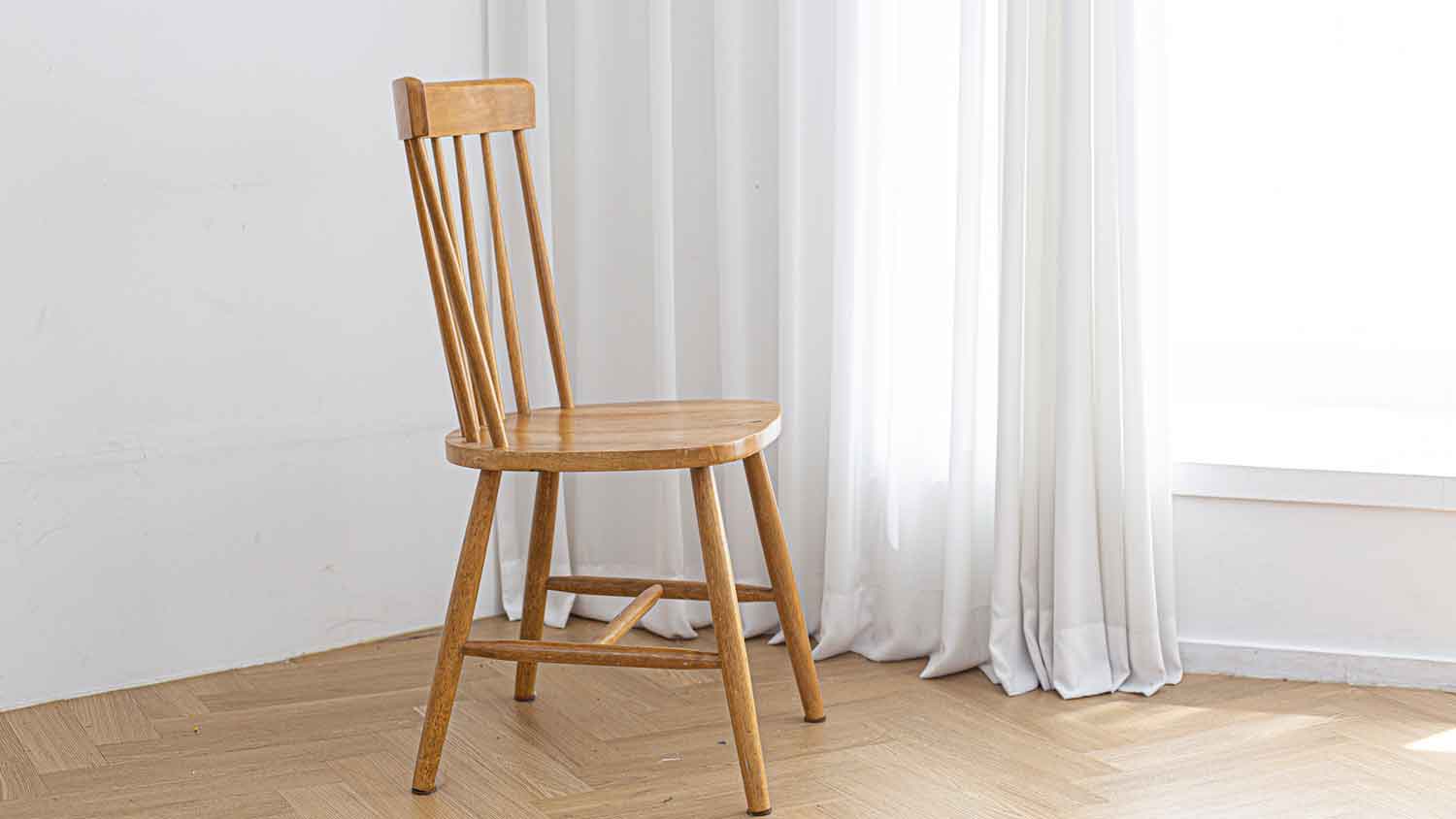
Wondering how much does it cost to copy a key? Discover prices, key types, and cost-saving tips to help you budget for your next key duplication.
Don’t panic over a broken lock


Oh no—you’ve just broken your front door lock. Not wanting to be home without anything securing your home against unwanted visitors, you’re in a tizzy wondering how to lock a door without a lock.
First things first: Call a locksmith. It is essential to have your lock repaired or replaced ASAP. Once help is on the way, fortify your door using one of these proven methods.
Repairing a broken lock in your home is essential to keep your place safe and worry-free. A working lock is like a protective shield, defending against unwelcome intrusions and even accidents within a home. For instance, a broken lock on a basement door won’t prevent kiddos from falling down cellar stairs.
A typical locksmith visit ranges from $100 to $200, though some services may reach as high as $500. Your total locksmith cost will vary based on location, repairs or materials needed, and the time of day. For instance, if you call a local locksmith offering 24/7 service during the wee hours, expect to pay a surcharge.
Prepping for a temporary fix involves gathering the necessary tools and materials. But first, you need to assess the damage. Start by carefully inspecting the broken lock to understand the extent of the issue. Determine whether the lock is entirely non-functional or weather-impacted. Once the issue is identified, move on to one of the following fixes while you wait for the locksmith to arrive.

Locking a door using a doorstop or wedge is a simple yet effective way to enhance security. Here's what to do.
Ensure you have a sturdy and reliable door stop or wedge. Look for an option made of rubber, wood, or metal. Anything flimsy will break easily under pressure. Ensure the stopper can grip the surface instead of slipping along if the door is pushed.
Stand inside the room with the door you want to secure. Place the door stop on the floor and slip the thinnest section of the stop against and under the door. If you have a rubber mallet, you can tap it securely in place.
Make any necessary adjustments to ensure a tight fit. The doorstop should wedge securely under the door, preventing it from being pushed open from the outside.
Ask a neighbor or a household member to stand outside the door and gently push to confirm that the doorstop is holding it in place. The wedge should not move, slide, or dislodge.
When you want to leave the room or your abode, remove the door stop by sliding it out from under the door.

Look for a piece of furniture that will fit under the door knob. Typically, a chair will do the trick.
Select a sturdy chair or piece of heavy and stable furniture.
Position the item in front of the door, ensuring it is close enough not to be pushed aside.
Angle the item to rest against the door, under the knob, to create a wedge-like effect.
Ensure a snug fit and add books to increase the weight and stability of the item.
Test the door from the other side by pushing to see if the barricade holds.
There are several ways to lock a door using a belt. Each method below depends on the type of door you have. Don’t have a belt? Use a rope or a strap instead.
First, grab your belt. Then, loop it on the arm bolted to the door frame. Remember to thread the strap through the buckle. Next, wrap around both arms tightly. When you are nearly out of slack, thread the belt from behind and then the center—repeat to keep it nice and tight. Now, test your work. The door may give a little, but it won't be able to open fully.
To do this, you must loop the belt around the handle and then loop to something heavy or anchored to prevent the handle from moving. Consider using two belts for extra security if the lever works up and down.
You will need a rope for this one. Loop the rope around the handle and then attach it to a heavy object like your fridge. Anyone on the other side should be unable to pull the door open against this weight.
This is the easiest hack of all. Just wrap the strap around both handles on French doors to keep them from opening.

Your local hardware store is brimming with temporary door-locking solutions. These items are easy to install and remove with or without the right tools.
These devices reinforce the door's security from the inside. They are adjustable and can be placed horizontally across the door or floor, like a sturdier doorstop, to prevent it from opening.
Portable door locks are compact devices that attach to the door and frame, adding an extra layer of security. They are suitable for both inward and outward-opening doors.
It won't keep your door fully closed, but it will boost security. A security chain will offer additional protection after fixing or replacing your broken lock. It will also allow you to crack the door to peek outside.
It works similarly to a security chain but keeps your door completely closed.
When these two things are combined, you can secure a door temporarily from the inside or outside. But remember, never use this method to lock people in your home unless there is another exit.
Cold and hot weather can impact door locks, potentially affecting their performance and functionality differently.
In below-freezing temperatures, moisture can freeze within the lock mechanism. When this happens, the key may have difficulty turning, or the lock could become completely frozen, making it challenging to unlock the door. To address this, try warming your key or use a de-icer spray.
Hot weather can cause the expansion of doors and door frames. This expansion can lead to misalignment and put stress on the lock mechanism, potentially making it difficult to turn the key smoothly. If your door frame becomes warped, you may need to call a pro to address it. You can also try a lock lubricant.
Whether to hire a locksmith or replace a lock yourself depends on various factors, including your skill level, the complexity of the lock, and your specific needs. Here are some considerations to help you decide.
Complexity: High-security or complex locks often require specialized knowledge and tools to install or repair correctly.
Security: Professional locksmiths know the latest security standards and can recommend the most suitable lock if yours needs replacing.
Guarantee: Many locksmiths provide warranties or guarantees for their work, offering peace of mind.
Skill and tools: A DIY installation can be cost-effective if you have the necessary tools and experience.
Remember that improperly repaired or replaced locks and temporary locks can compromise security. If you doubt your ability to install a lock correctly, hiring a locksmith is safer. Additionally, local building codes and regulations may require professional installation for certain types of locks or doors. Always prioritize the security of your home when making this decision.
From average costs to expert advice, get all the answers you need to get your job done.

Wondering how much does it cost to copy a key? Discover prices, key types, and cost-saving tips to help you budget for your next key duplication.

Uncover the cost of lock replacement. Discover labor, materials, and cost-saving tips for your next lock replacement project.

Discover the average deadbolt installation cost, price factors, and tips to save on your project. Learn how to budget for secure home upgrades.

Learn about different types of deadbolts on the market and which one will make your home the most secure.

Rekeying or replacing your locks are upgrades you can make to boost your home’s security. Learn about their differences to decide which solution is best for you.

Deadbolt locks add an extra layer of security. Learn about the different types and benefits so you can choose the perfect one to protect your home.